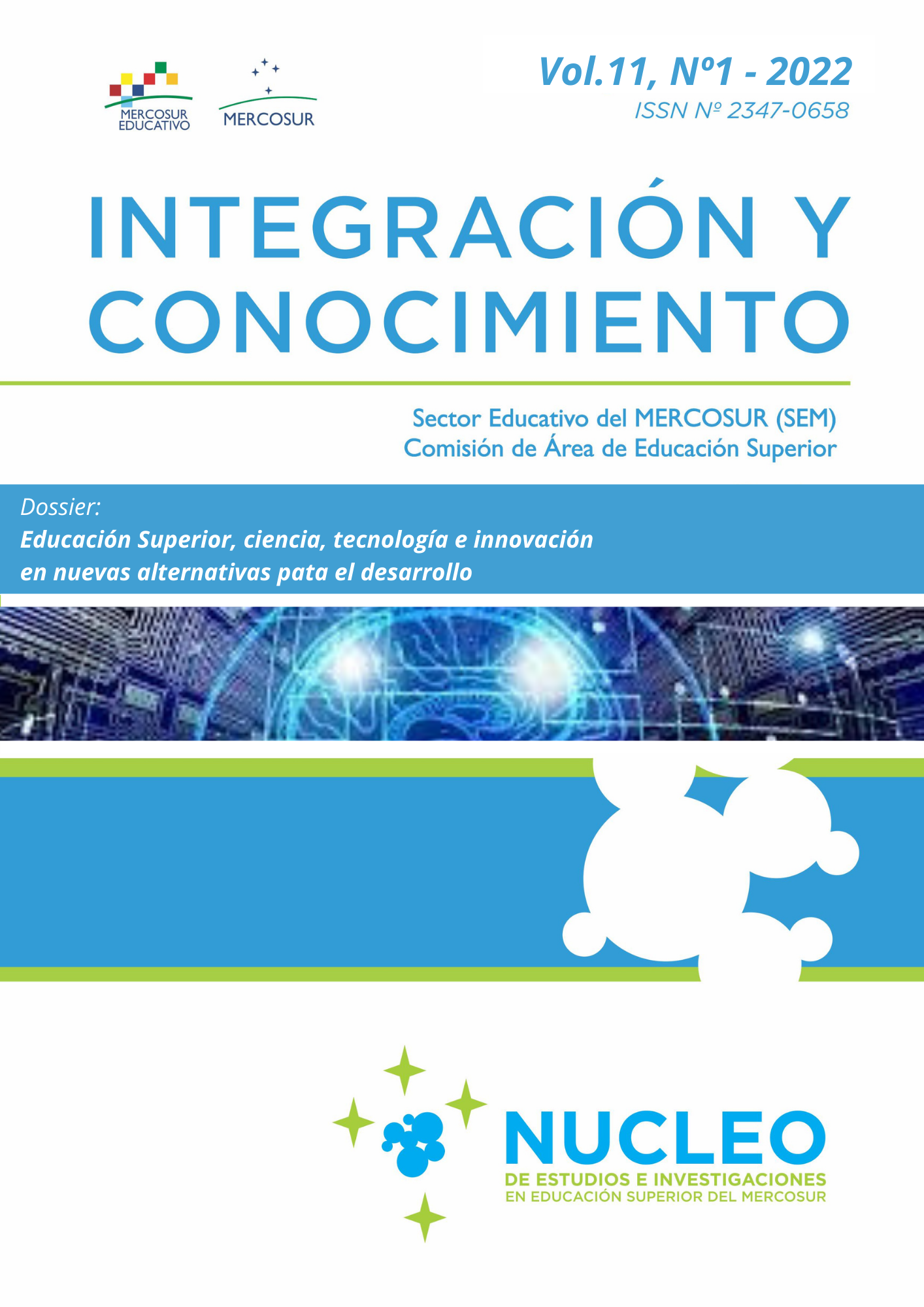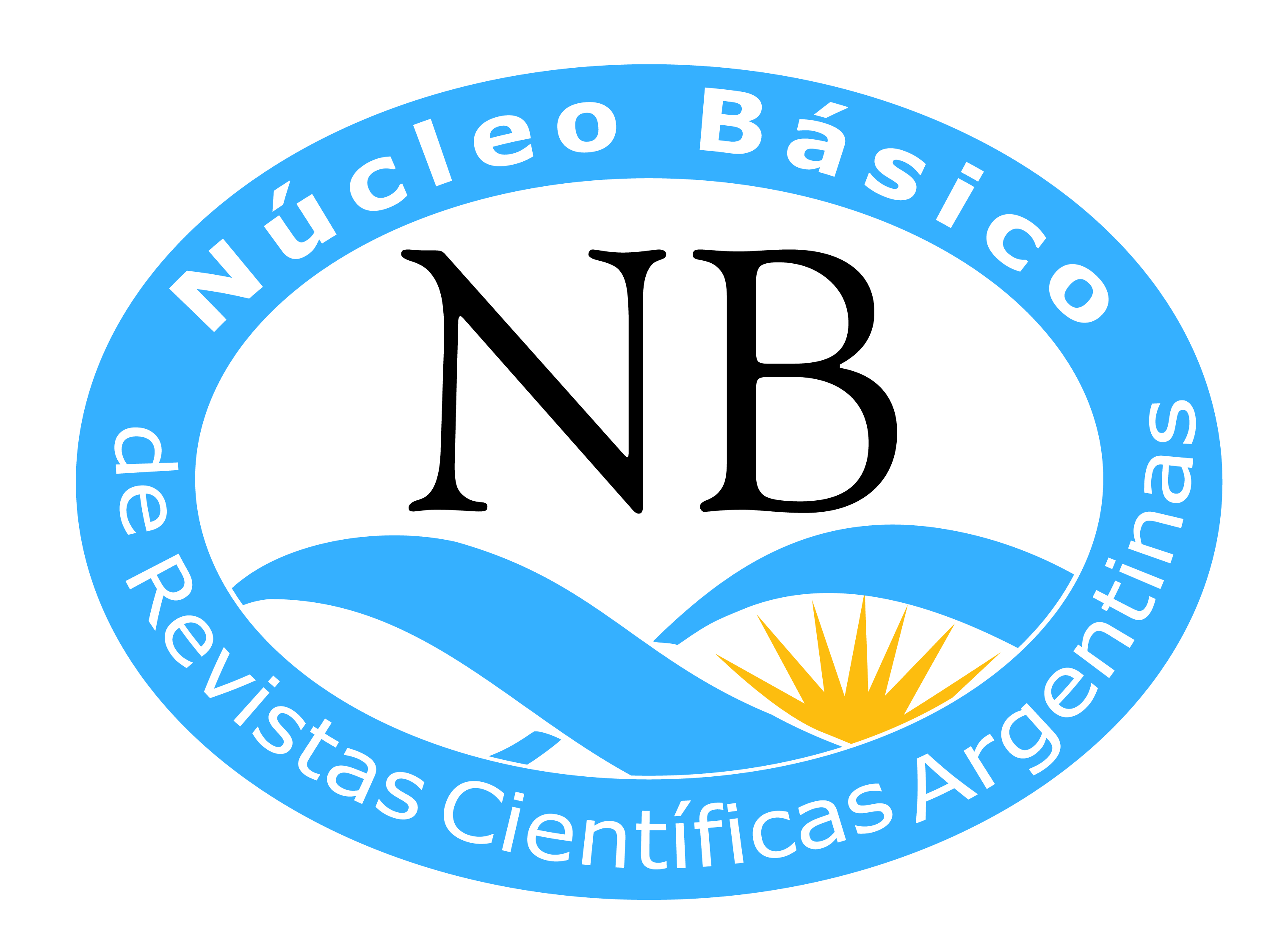Training for Medical Education: Results and Challenges
DOI:
https://doi.org/10.61203/2347-0658.v11.n1.36525Keywords:
pandemic’s teaching innovation, Medical teaching, new normality teaching reconfigurationAbstract
As the most ancient school in Health Sciences, Medical Sciences Faculty, at the Asunción National University (FCM-UNA), in Paraguay, has been the only one of its kind until XXth century second half. In such character has been forming most of Paraguayan medical doctors, who have been teaching medical sciences at his own school as well as in newer schools which opened later, in the whole country. In that way, the FCM-UNA has developed a teaching model which is a reference for medical teaching in Paraguay. Covid-19 Pandemic has violently changed teaching scenarios, as much for high demand of health professionals to take care of the pandemic as well for didactic transformation of virtual classes and hospital´s practice. At this article results of curriculum analysis, from implementation´s beginning in 2017, its pandemic development and the resulting immediate and future challenges for a highly demanded profession, with ethical and humanitarian commitments, which could take professionals mental health to the limit.
Downloads
References
Arandia Loroño, M., & Fernández Fernández, I. (2012). ¿Es posible un curriculum más allá de las asignaturas? Diseño y práctica del grado de Educación Social en la Universidad del País Vasco. REDU. Revista de Docencia Universitaria, 10(3), 99-123. DOI: https://doi.org/10.4995/redu.2012.6016
Camps, V. (2007). La excelencia en las profesiones sanitarias. Fundación Medicina y Humanidades Médicas. HUMANITAS, HUMANIDADES MÉDICAS (21), 1-21. Recuperado de https://dialnet.unirioja.es/servlet/articulo?codigo=6709494
Caplan, G. (1985). Principios de Psiquiatría Preventiva. Barcelona: Paidós Ibérica S.A.
Core Committee, Institute for International Medical Education. (2002). Global minimum essential requirements in medical education. Med Teach, 24(2), 130-5. National Library of Medicine. doi:10.1080/01421590220120731
Escanero Marcén, J. (2007). Integración curricular. Educación Médica, 10(4), 23-30. Recuperado de https://scielo.isciii.es/scielo.php?script=sci_abstract&pid=S1575-18132007000500005
Facultad de Ciencias Médicas. UNA. (2021). Facultad de Ciencias Médicas. UNA. Recuperado de https://www.med.una.py/index.php/facultad/resena-historica
Flannery, R., & Everly, G. (2000). Crisis intervention: a review. International Journal of emergency mental health, 2(2), 119-125.
Frenk J, C. L.-M. (2010). Health professionals for a new century: transforming education to strengthen health systems in an interdependent world. Lancet, 376(9756), 1923-58. DOI:10.1016/S0140-6736(10)61854-5
Harden, R. M. (2000). The integration ladder: a tool for curriculum planning and evaluation. Med Educ, 34(7), 551-557. DOI: 10.1046/j.1365-2923.2000.00697.x.
Leonhardt, J., & Vogt, J. (2006). Critical incident stress. Hampshire: Ashgate.
Morán- Barrios, J. (2013). Un nuevo profesional para una nueva sociedad. Respuestas desde la educación médica: la formación basada en competencias. Revista de la Asociación Española de Neuropsiquiatría, 33(118), 385-405. Recuperado de https://www.revistaaen.es/index.php/aen/article/view/16614
Morán-Barrios, J. (2015). Perfil del profesional en el siglo XXI. En J. Millán Núñez-Cortés, J. L. Palés Argullós, & J. Morán-Barrios, Principios de Educación Médica, desde el grado hasta el desarrollo profesional (pp. 47-61). Madrid: Editorial Médica Panamericana.
OPS. (2017). La salud mental en la Región de las Américas. PAHO. Recuperado de https://www.paho.org/salud-en-las-americas-2017/?post_t_es=la-salud-mental-en-la-region-de-las-americas&lang=es
Ruiz Gauna, P., González Moro, V., & Morán-Barrios, J. (2015). Diez claves pedagógicas para promover buenas prácticas en la formación médica basadas en competencias en el grado y en la especialización. Educación Médica, 16(1), 34-42. Recuperado de https://www.elsevier.es/es-revista-educacion-medica-71-articulo-diez-claves-pedagogicas-promover-buenas-S1575181315000078
Ruiz, P., González Moro, V., & Fonseca Alfonso, M. (2012). Una formación en ciencias de la salud basada en la lógica social de las competencias. Revista de Docencia Universitaria, 10(Extra 1), 95-117. Recuperado de https://dialnet.unirioja.es/servlet/articulo?codigo=4091469
Seyle, H. (1998). A syndrome produced by diverse nocuous agents. Journal of Neuropsychiatry Clinical Neurosciences, 10(2), 230-231.
Shim, R. S., & Compton, M. (2018). Addressing the social determinants of mental health: If not now, when? Psychiatric Servicies, 69(8), 844-846. DOI: 10.1176/appi.ps.201800060
UNESCO. (2020). El coronavirus covid-19 y la educación superior: impacto y recomendaciones. Recuperado de https://www.iesalc.unesco.org/2020/04/02/el-coronavirus-covid-19-y-la-educacionsuperior-impacto-y-recomendaciones/
Vicedo Tomey, A. (2009). La integración de conocimientos en la educación médica. Educación médica Superior, 23(4). Recuperado de http://scielo.sld.cu/scielo.php?script=sci_arttext&pid
=S0864-21412009000400008
Downloads
Published
Issue
Section
License

This work is licensed under a Creative Commons Attribution-NonCommercial-ShareAlike 4.0 International License.
Authors who have publications with this journal accept the following terms:
a. Authors shall retain their copyright and guarantee the journal the right of first publication of their work, which shall simultaneously be subject to the Creative Commons License of Recognition which allows third parties to share the work as long as its author is indicated and its first publication is this journal.
b. Authors may adopt other non-exclusive licensing agreements for the distribution of the published version of the work (e.g., depositing it in an institutional telematic archive or publishing it in a monographic volume) provided that the initial publication in this journal is indicated.
c. Authors are allowed and encouraged to disseminate their work via the Internet (e.g. in institutional telematic archives or on their website) after publication of the article, which may lead to interesting exchanges and increased citations of the published work. (See The Effect of Open Access).



